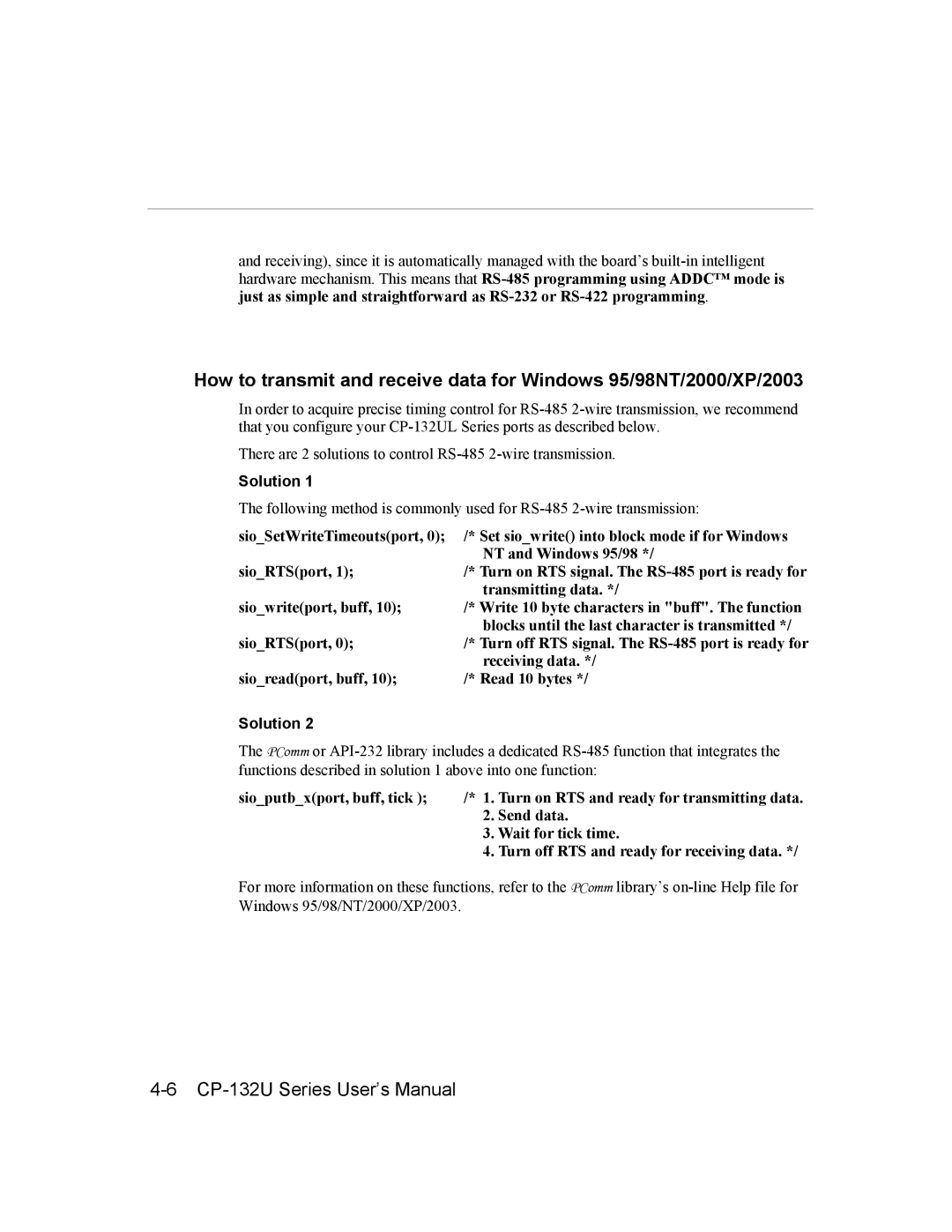and receiving), since it is automatically managed with the board’s
How to transmit and receive data for Windows 95/98NT/2000/XP/2003
In order to acquire precise timing control for
There are 2 solutions to control
Solution 1
The following method is commonly used for
sio_SetWriteTimeouts(port, 0); /* Set sio_write() into block mode if for Windows
| NT and Windows 95/98 */ |
sio_RTS(port, 1); | /* Turn on RTS signal. The |
| transmitting data. */ |
sio_write(port, buff, 10); | /* Write 10 byte characters in "buff". The function |
| blocks until the last character is transmitted */ |
sio_RTS(port, 0); | /* Turn off RTS signal. The |
| receiving data. */ |
sio_read(port, buff, 10); | /* Read 10 bytes */ |
Solution 2
The PComm or
sio_putb_x(port, buff, tick ); | /* 1. | Turn on RTS and ready for transmitting data. |
| 2. | Send data. |
| 3. | Wait for tick time. |
| 4. Turn off RTS and ready for receiving data. */ | |
For more information on these functions, refer to the PComm library’s
